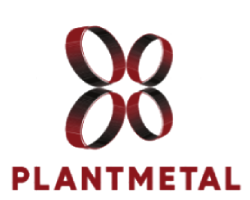Overview:
Deep drawing bushings are precision cylindrical components made through deep drawing or stamping processes. Also known as torque limiters, these bushings reduce noise, vibration, and wear in equipment with rotating or sliding shafts, improving efficiency in high-impact, high-load applications like automotive and heavy-duty machinery. In aerospace, they offer superior strength, durability, and wear resistance, ensuring smooth operation under extreme conditions. These bushings are crucial for maintaining precision, reducing friction, and enhancing the reliability of aerospace systems, requiring precise design, material selection, and machining for optimal performance.

Details:
| Item | Description |
| Surface Treatment | Polishing |
| Production Type | Mass Production |
| Process | Deep Drawing |
| Material | Stainless Steel, Aluminum, Copper |
| Hardness | 20-70 |
| Surface Roughness | 0.4-3.2 |
| Heat Treatment | Available |
| Delivery Time | 10-15 days |
| Sample | Available |
| Capacity | 100,000 PCS/Month |
| Quality Control | 100% Inspection |
| MOQ | Small Order Accepted |
| Transport | Express, Ship |
| Trademark | OEM |
| Origin | Xiamen, China |
| Production Capacity | 100,000 PCS/Month |
Advantages of Our Bushings:
- Reduced weight
- Cost-effective
- Enhanced load-bearing capacity
- Improved resistance to shock loads and vibrations
- Greater tolerance for shaft misalignments
Production Process:
- Material Selection: The first step involves choosing the appropriate materials, such as stainless steel, aluminum, or copper, based on the specific requirements of the aerospace application, including strength, durability, and corrosion resistance.
- Blanking: The selected metal sheet is cut into a flat disc or blank shape, which serves as the starting material for the deep drawing process. This step requires precision to ensure the correct dimensions and material thickness.
- Deep Drawing: In this critical step, the blank is placed into a die, and a punch presses the material into the desired shape. The deep drawing process stretches the metal, forming the cylindrical bushing with the required dimensions. This process may involve multiple stages to achieve the final geometry.
- Heat Treatment: Depending on the material and application, the drawn bushings undergo heat treatment to enhance properties like hardness, strength, and fatigue resistance, which are essential for aerospace components.
- Surface Treatment: To improve corrosion resistance and ensure smooth operation, the bushings may undergo surface treatments such as polishing or coating with protective finishes.
- Precision Machining: After deep drawing, the bushings may require further machining, such as turning, milling, or honing, to achieve precise dimensions and tolerances necessary for aerospace applications.
- Inspection and Quality Control: Throughout the production process, rigorous quality control measures are implemented. This includes visual inspection, dimensional checks, and non-destructive testing to ensure the parts meet aerospace standards.
- Final Assembly and Packaging: Once all processes are completed, the deep-drawn bushings are assembled if necessary and carefully packaged to prevent damage during transportation.
Other Post Process Options:
Anodizing: An electrochemical process that enhances corrosion resistance and wear properties by forming a protective oxide layer on the surface of metals, particularly aluminum.
Nickel Plating: A coating process where a layer of nickel is deposited on a metal surface to improve corrosion resistance, wear resistance, and provide an aesthetically pleasing finish.
Tin Plating: A process in which a thin layer of tin is applied to metal surfaces to prevent corrosion, improve solderability, and offer enhanced electrical conductivity.
Our Factory:
We operate a fully equipped manufacturing facility with a diverse range of advanced equipment, including 25 punch presses (ranging from 25 tons to 300 tons), precision wire EDM machines, grinding tools, welding and polishing systems, and ultrasonic cleaning units. Our comprehensive metal stamping capabilities are complemented by a wide array of metal plating processes, such as electroplating, zinc plating, nickel plating, chrome plating, and anodizing. These plating techniques are employed to enhance the durability, aesthetic appeal, and performance of our products. With state-of-the-art plating facilities, we ensure consistent finishes, corrosion resistance, and adherence to stringent industry standards. By integrating automated production lines, high-precision equipment, and rigorous quality control, we deliver metal stamping products that meet the highest standards of excellence.












